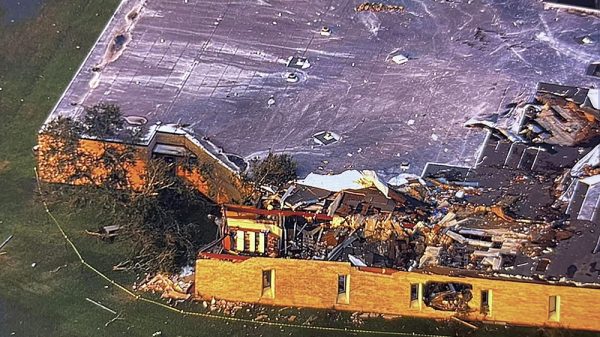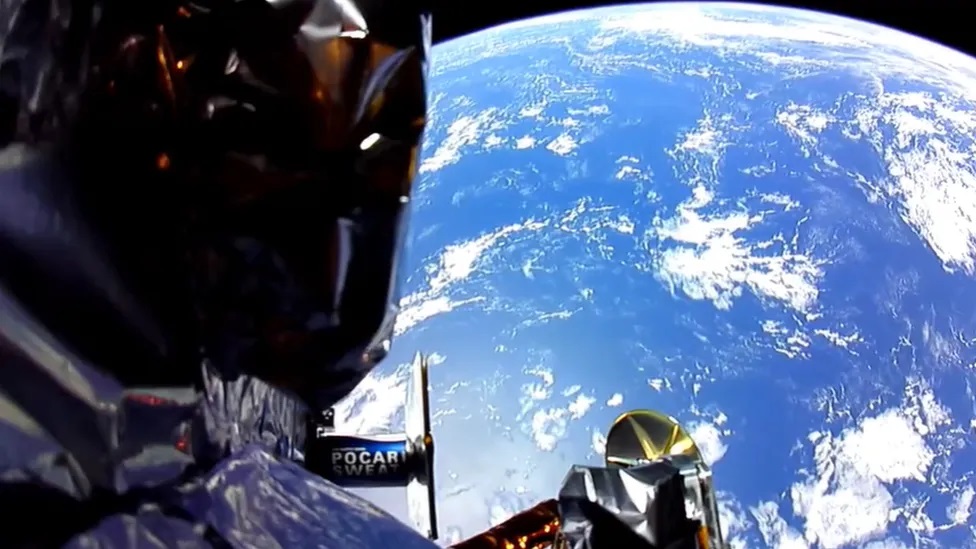
Astrobotic’s private Peregrine moon lander encountered unanticipated difficulties following its detachment from the Vulcan Centaur rocket on January 8, 2024. (Photo: Space)
Despite Setbacks, Astrobotic’s Peregrine Lander Met with Unforeseen Obstacles During Debut Mission
Astrobotic’s private Peregrine moon lander encountered unanticipated difficulties following its detachment from the Vulcan Centaur rocket on January 8, 2024. Although the launch itself proceeded smoothly, an unexpected propulsion anomaly led to a significant propellant leak just hours into the mission, ultimately preventing the lander from reaching the moon. This unfortunate turn of events culminated in the lander reentering the atmosphere and breaking up over the Pacific Ocean on January 18.
Throughout the mission, Astrobotic remained transparent, providing frequent updates on the Peregrine lander’s status. Despite the premature conclusion, Astrobotic CEO John Thornton reflected on the mission with pride, emphasizing the successful functionalities of various aspects of the spacecraft, including avionics, software, and systems architecture. Thornton acknowledged the anomaly that led to the unsettling outcome, citing a valve malfunction in the propulsion system that resulted in a pressure surge, ultimately leading to the container’s rupture.
The resilience and ingenuity of Astrobotic’s flight engineers shone through as they improvised maneuvers to orient the spacecraft’s solar panels and capture an image of Earth, showcasing the team’s exceptional problem-solving skills during the crisis. Moreover, mission controllers strategically utilized the propellant leak to guide the lander on a safe reentry trajectory over the Pacific Ocean, minimizing potential risks associated with space debris and maintaining public safety.
READ ALSO: 14,000-Year-Old Woolly Mammoth’s Journey Unravels Early Human-Hunting Camps In Alaska
While some of the payloads onboard the Peregrine lander were unable to fulfill their intended purposes, certain instruments, such as a radiation detector and NASA-built spectrometers, successfully gathered valuable data related to the radiation environment in cislunar space. Astrobotic’s Vice President of Business Development Dan Hendrickson expressed gratitude to the payload teams for their support, emphasizing the complexities and risks associated with lunar missions and acknowledging the resilience of the customers involved.
Despite the hurdles, Astrobotic’s Peregrine mission shows that failure is often part of success. NASA’s Science Mission Directorate’s Deputy Associate Administrator for Exploration Joel Kearns reaffirmed the Commercial Lunar Payload Services program‘s commitment to innovation and learning from each trip. The Nova-C lander, manufactured by Intuitive Machines, will advance lunar science and show resilience.
READ ALSO: Europe Unites To Bolster Ukraine In The Face Of Russian Aggression




![Tyson Foods Plant [Photo: Food Manufacturing]](https://southarkansassun.com/wp-content/uploads/2023/08/iStock_1185520857__1_.5e441daa51cca-600x337.jpg)








![Silverado Senior Living Management Inc. [Photo: Los Angeles Times]](https://southarkansassun.com/wp-content/uploads/2023/10/download-6-4-600x337.jpg)

![China's Wuhan Institute of Virology [Photo: Nature]](https://southarkansassun.com/wp-content/uploads/2023/09/d41586-021-01529-3_19239608-600x337.jpg)















